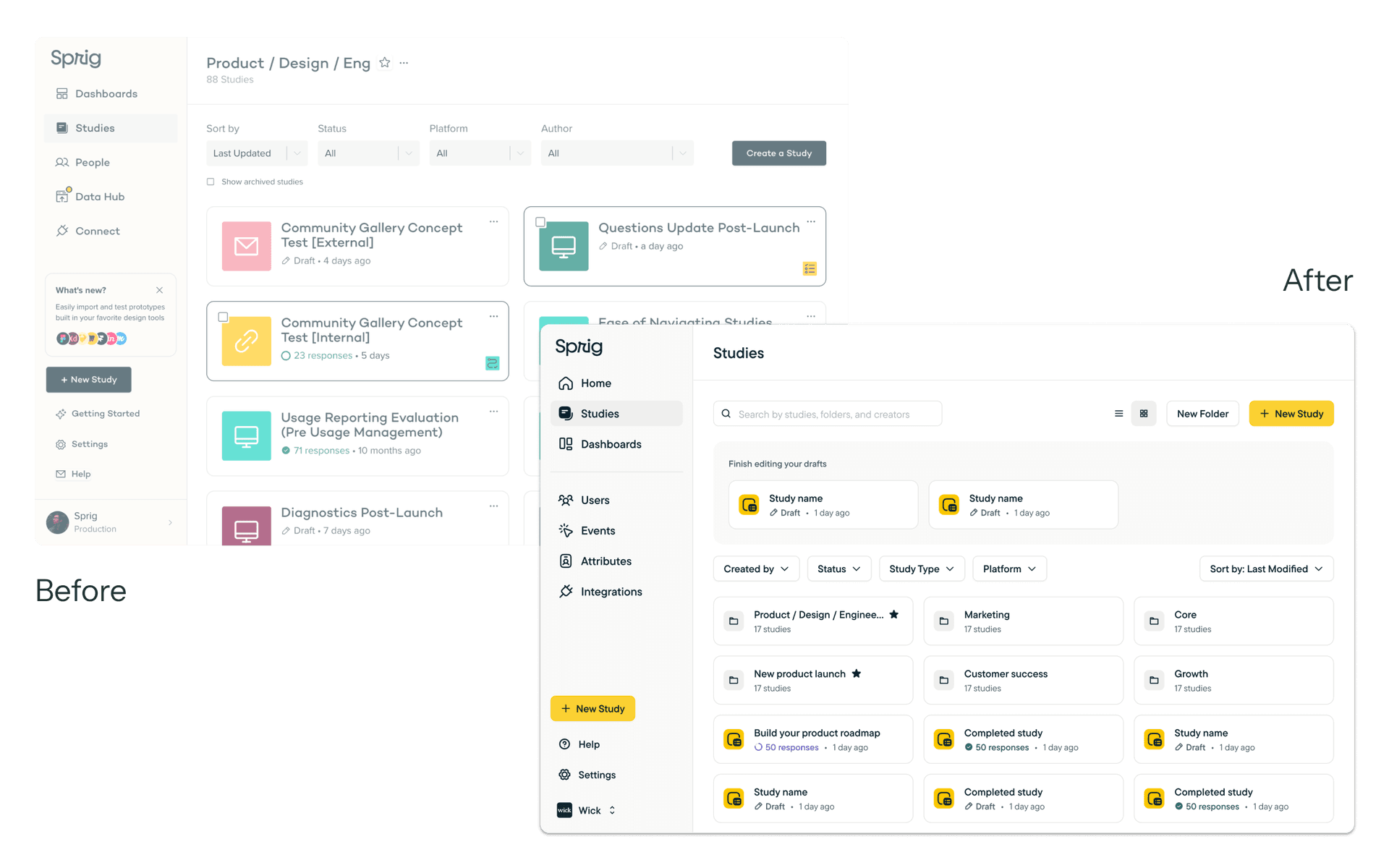
Sprig
Head of Design, Interim Head of Product • 2022—2023
Sprig is a user insights tool trusted by companies like Notion, Dropbox, Figma, and Ramp.
In a hybrid manager/contributor role, I led the product, design, and brand teams through our expansion from a single product to a diverse suite. I set the roadmap, reviewed all designs, and established processes for effective product development. With a team of around 50, we achieved a remarkable balance of speed and quality.
Replays
As we looked to expand beyond our original survey product, I collaborated with our leadership team to explore opportunities, conducting market and user research to shape our strategy.
As we landed on building a session replay product, I designed the first version in a hands-on capacity before passing it over to Angela to see it through completion.
While session replay features are common, the challenge was integrating them alongside our survey product. Our creation flow, product navigation, and billing were centered around the concept of a "study". I guided the team in defining how replays fit into this framework.
To further differentiate our product, I conceptualized a unique feature that pairs replays with surveys to gather deeper insights. For instance, if users rate your onboarding experience poorly, you can now watch screen recordings of their sessions to understand why.
AI Analysis
I drove our efforts in AI during the initial LLM boom of early 2023, initially as a hands-on product manager and designer and later as a leader.
Since Sprig’s inception in 2018, we had used AI to aggregate freeform survey responses into themes through a blend of AI suggestions and human editing. With the release of GPT-3.5, I worked closely with our Head of ML to explore its application to our processes. This led us to adopt an AI-first approach, removing the need for human review and accelerating our response times. On the design front, I took the opportunity to address usability challenges.
Our early success with GPT inspired us to explore its broader applications within Sprig. Given that Sprig continuously captures user experience data at scale, we saw an opportunity to use AI to surface valuable insights from this vast dataset.
But what qualifies as an "insight" worth highlighting? Initially, we relied too heavily on the LLM to determine what was interesting, which didn’t always align with user needs. To address this, I developed a framework of four categories of insights that serves as the foundation of Sprig's AI features:
- Strengths: What users love about your product
- Opportunities: Attributes that could be improved
- Trends: Data that's changing over time
- Correlations: Patterns in how different groups of users behave
As PM, I worked closely with our engineering team in a tight loop of conceptualizing product features and evaluating the feasibility of obtaining high-quality data. As designer, I created the core flows of these features before handing them off to Luke.
During my time, we launched two major AI-driven features. First, a feature for summarizing insights across entire surveys.

Second, a new Sprig home page that aggregates insights being uncovered across the company into a chronological activity feed.

Beyond these launches, we created a vision and future roadmap of AI-driven developments in Sprig. These features paved the way for a radical transformation in Sprig's positioning, shifting from a "survey tool" to "AI-powered insights for product teams."
Brand
Sprig's brand historically had a whimsical tone, but as our product offering and target audience expanded, we needed to blend playfulness with a more professional image.
I hired Emily, Sprig's first brand designer and webmaster. Together, we set about redefining the Sprig brand, updating colors, typography, and imagery. While I primarily focused on creative direction, I also contributed directly by designing a set of icons to differentiate our various products.

We then overhauled sprig.com, our marketing website within just a month and a half. Along with our product marketer, we rethought content and design of every single page. I played a connective role in providing context about our product, shaping its positioning, which features to highlight, and how to position them.

In parallel with this brand work, I worked with our product designers to harmonize the design languages of product and brand.
